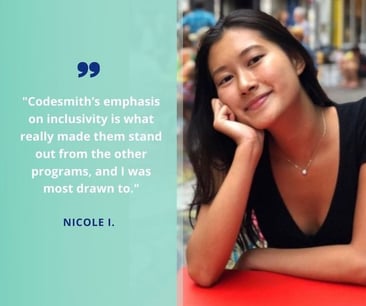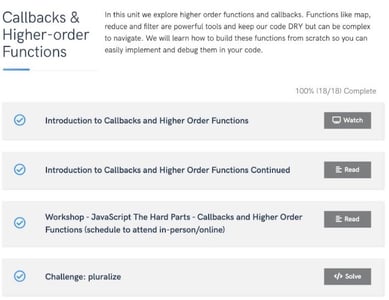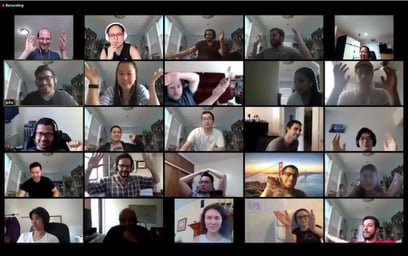What I Built: A career change from banking to software engineering via Codesmith.
This is part of an ongoing series about the amazing products Codesmith grads have built during...

A LITTLE BIT ABOUT MYSELF AND WHY I CHOSE CODESMITH
My name is Nicole and I’m going to be joining Codesmith cohort 19 in New York.

I studied Neuroscience in university, and it was through my studies where I found how computer science not only complements scientific research but advances it. I also loved the idea that technological innovation has the ability to combine scientific discovery with helping those less fortunate or those who lack the means to achieve their goals. Wanting to merge these two principles together, I began to research how to best study software engineering after graduating. I toyed with the idea of studying it at university but found Codesmith were better suited for my goals.
I chose Codesmith because I appreciated how they emphasize on understanding the fundamentals of the language, and how it works under the hood. This helped me better my understanding of Javascript. Above all, Codesmith’s culture and goals were aligned with mine. A large focus of Codesmith is inclusivity and diversity, they have a number of scholarships for women, minorities, LGBTQ+, and just about anything, with a specific goal of making learning software engineering as accessible as possible to anyone who is interested.
My goal after graduating is to work in biotech, but I also believe that as a woman in tech, I have the responsibility to pave the way for other women within the discipline and beyond. Codesmith’s emphasis on inclusivity is what really made them stand out from the other programs, and I was most drawn to.
HOW I GOT INTO CODESMITH
Codesmith’s application process is broken up into 3 sections, a written application, a non-technical interview and the technical interview.
WRITTEN APPLICATION
The written application includes a few questions about your aspirations, motivation, and goals in studying software engineering. Be honest! Whatever your reasons may be, taking this leap to study a new skill is respectable and it is definitely not an easy process.
NON-TECHNICAL INTERVIEW
The non-technical interview consists of a video call with an admissions officer, and the best advice is to be yourself! Codesmith has a welcoming culture, and really, the point of the interview is to get to know you. Answer the questions honestly.
TECHNICAL INTERVIEW
The technical interview emphasizes analytical problem solving and technical communication. Technical communication is an important, if not, essential skill in all software engineers. In the field, software engineers often work in groups on a single project. Writing clean, readable code, as well as being to express yourself while doing so, is crucial to being a software engineer. Practicing this skill from the get-go will be a great advantage to you.
A few resources that I found helpful to me was CSPrep and the workshops. CSPrep is a great way to prepare for the technical interview, the classes are designed to advance your skills in Javascript, as well as practice your technical communication. Codesmith hosts a number of workshops on a weekly basis. I found that attending those workshops were extremely useful in polishing up my technical communication. Participants are encouraged to use technical terms when whiteboarding out solutions, and this practice really solidifies your ability to use correct terminology more naturally.
Most importantly, the best way to practice technical communication is to PAIR PROGRAM! A common mistake that interviewees make is jumping too quickly into their code and not communicating what their thought processes are. Pair programming is a great way to practice verbalizing your thoughts and using correct terminology. It may be a little awkward and unnatural at first, but with time, you will notice that describing your code comes easier. Pair programming will also help with your non-technical communication.
Another criteria of Codesmith’s technical interview. Being thoughtful and empathetic are qualities of a great software engineer. Not only that, you’ll make a few friends along the way, and it’s a great way to be introduced to Codesmith’s culture.
 Don’t forget to useCSXto prepare for your interview! I completed all of the relevant CSX topics before I went into my first technical interview.
Don’t forget to useCSXto prepare for your interview! I completed all of the relevant CSX topics before I went into my first technical interview.
Lastly, don’t worry if you don’t pass your technical interview the first time, a lot of people don’t. If you get stuck on a problem during your interview, it’s okay! The goal of the interview is not to see how many questions you can do (there are an infinite number of questions, so there isn’t a finish line), but really, it’s to understand how you work through problems or issues that you run into. Console.log is your best friend in this situation, utilize the console and really try to debug your code. Start from where you think the code stopped working or isn’t working properly, and throw in a few console.logs. Don’t forget to keep talking throughout this process as well, it keeps the interviewer in the loop, and we sometimes realize what is wrong with our solution if we actually read it back to ourselves out loud.
CODESMITH CULTURE Screenshot of our cohort before a powerclap, a Codesmith tradition of leaving a room. Some people have also decided to change their background to match one of our cohort mates’.
Screenshot of our cohort before a powerclap, a Codesmith tradition of leaving a room. Some people have also decided to change their background to match one of our cohort mates’.
The best thing about Codesmith and why I love their culture is that Codesmith wants you to succeed, and every staff member on the team is rooting for your success. Don’t be afraid to ask for help. Reach out to a fellow (someone who graduated from the program and is working with the current students) or even a member of staff if you want to organize a mock interview, need help on a certain question, or simply just want to chat about the application process, they are more than happy to help!
Blog written by Nicole I., Codesmith NYC Cohort 19
This is part of an ongoing series about the amazing products Codesmith grads have built during...